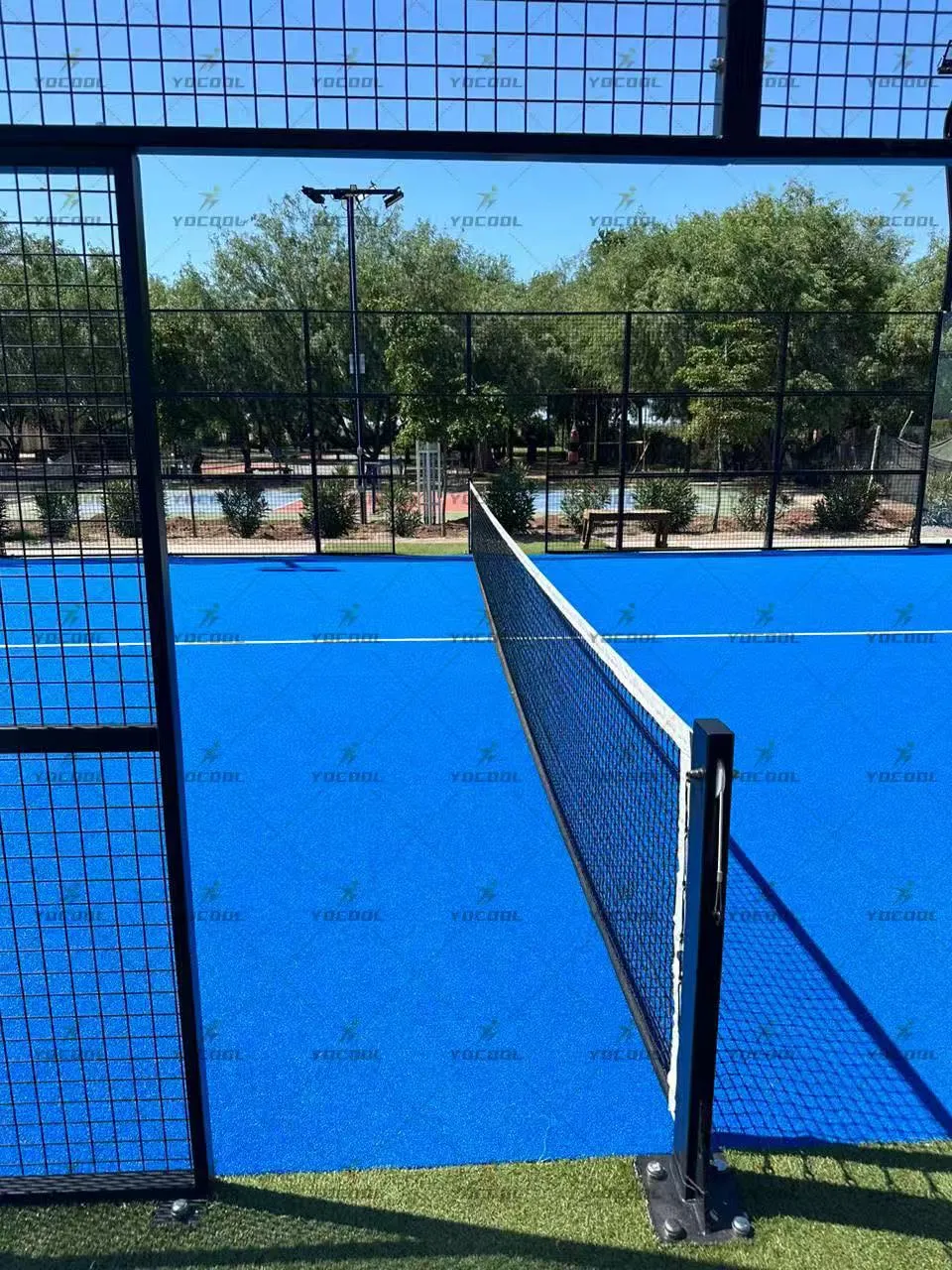

Squash is an emerging sport that has rapidly gained popularity worldwide due to its fusion of tennis and squash characteristics. This sport relies on a special stadium design, where all four walls are made of sturdy and transparent glass. In addition to its aesthetic and ornamental value, Padel Glass also plays a crucial role in exercising endurance and coordination. This article will explore how Padel Glass promotes the improvement of endurance and coordination, and analyze the underlying principles of movement.

Players need to run continuously in a relatively small space, react quickly, and constantly adjust their hitting position. The presence of padel court glass further exacerbates this intensity. Due to the ability of the ball to bounce off glass walls, players need to remain vigilant at all times, predict the trajectory of the ball's movement, and adjust their pace in a timely manner to intercept and hit. This means that athletes need to have stronger sustained running ability and more agile reaction speed to deal with balls from all directions. Long term squash competitions can effectively improve cardiovascular function, enhance muscle endurance, and thus achieve the effect of improving overall endurance.
In squash, players need to coordinate their eyes, hands, and feet perfectly in order to accurately hit the ball that bounces back. The trajectory of the ball bouncing off the all glass squash court is often difficult to predict, and players need to quickly determine the landing point, speed, and angle of the ball, adjust their body posture, and use appropriate strength and skills to hit the ball. This requires athletes to have a high level of physical control and spatial perception ability. Through continuous practice and adaptation, athletes can gradually improve their hand eye coordination, body balance, and reaction speed, thereby enhancing overall motor coordination.
Due to the possibility of the ball rebounding from multiple angles and directions, players need to learn to use glass walls for offense and defense, creating more favorable opportunities for hitting the ball. This requires players not only to possess basic hitting skills, but also to be able to flexibly apply tactical strategies and make adjustments according to actual situations. For example, players can use glass walls to cleverly bounce balls, disrupt the opponent's rhythm, or force the opponent to a disadvantageous position through precise landing control. All of these require athletes to possess higher levels of athletic intelligence and coordination skills.
In summary, Padel Glass is not only a component of squash sports, but also an important tool for improving endurance and coordination. Through continuous running, quick reflexes, and precise hitting, squash can effectively exercise cardiovascular function and muscle endurance, thereby improving overall endurance levels. At the same time, predicting the trajectory of the ball, adjusting body posture, and applying tactical strategies can also promote the improvement of hand eye coordination, body balance, and reaction speed, thereby enhancing overall motion coordination. Therefore, squash, especially relying on the characteristics of Padel Glass, is a beneficial exercise for physical and mental health and deserves to be vigorously promoted.
The rebound characteristic of the glass wall prolongs the turn time, requiring players to continuously run and adjust their positions, similar to interval training (high-intensity sprinting+brief recovery).
Frequent turnaround runs and lateral movements can enhance cardiovascular endurance, especially in doubles where the field coverage is larger.
Predicting the angle at which the ball bounces off the wall requires hand eye coordination and spatial perception abilities (such as calculating the trajectory of the projectile).
Combining forehand and backhand strokes, volleys, and high-pressure movements, train full body dynamic balance (especially when turning quickly).
Endurance level: Maintain low center of gravity movement, reduce ineffective running, and save energy.
Coordination level: Stand sideways facing the wall, use non hand clapping to assist in aiming, adjust the hitting force to avoid excessive rebound.
The speed of the ball fluctuates due to wall rebound, forcing players to make quick decisions (such as choosing to hit directly or waiting for a rebound).
Long term training can improve neuromuscular coordination (such as instantly switching between offensive and defensive movements).
Endurance training: Practice hitting and pulling multiple shots, forcing yourself to touch the wall after each shot and then return to your original position.
Coordination training: Set a target area (such as a specific mark on a glass wall) and require precise rebound to a designated point.
The Rising Padel Tennis Pickleball: A New Social Sports Venue
The Exercise Benefits of Padel Glass for Endurance and Coordination
Padel Tennis Ppickleball: Differences and Development Prospects of Emerging Ball Sports
Padel Court in its infancy: a new type of sports and social space
Padel Court Glass: Technology, Performance, and Impact
Paddle Tennis and Pickleball: a thriving sport